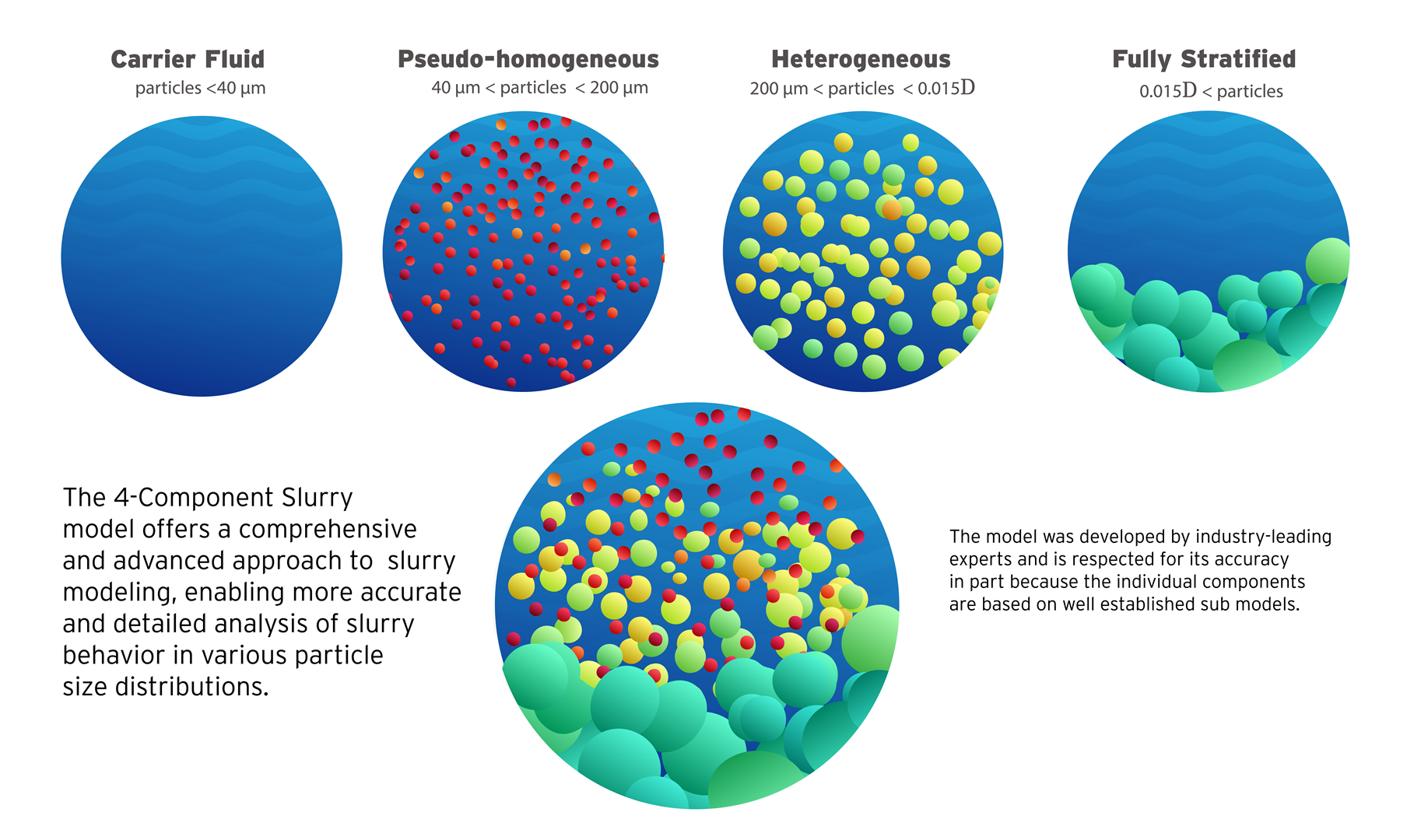4-Component Slurry Model
(SSL Module Only) The 4-Component Slurry Model is a holistic approach to characterizing how slurry flows function by considering the combined effects of four slurry flow regimes. The model strongly references and utilizes the method of the same name outlined by GIW Industries IncVisintainer, Robert. “GIW 4-Component Model Summary 2022-09-03.” GIW Industries Inc., 2022. [Online]. Available: https://www.ksb.com/en-us/services/service-for-slurry-pumps/hydraulic-lab.
The 4-Component Model can be selected on the Slurry Model dropdown in the Slurry Definition panel of Analysis Setup. Optionally, a Solids Library can be created to define the slurry properties.
Engineering Assumptions
See the SSL Engineering Assumptions topic.
The Four Slurry Regimes
The four slurry flow regimes are:
-
Carrier Fluid
-
Pseudo-homogeneous
-
Heterogeneous
-
Fully Stratified
The Carrier Fluid regime considers particles smaller than 40 μm. These solid particles mix with liquid in such a way that mixture viscosity is affected.
The Pseudo-homogeneous regime considers particles larger than 40 μm and smaller than 200 μm. Due to the turbulence, the solid particles are supported within the fluid. The mixture's viscosity is not affected by this regime.
The Heterogeneous regime considers particles larger than 200 μm and smaller than 1.5% of the pipe's diameter (μm). Particles of this size begin to settle creating a heterogeneous mixture where the solids are found in greater concentration at the bottom of the pipe. Turbulence in the fluid and contact with the pipe wall support these solids from settling out of the fluid.
The Fully Stratified regime considers particles larger than 1.5% of the pipe's diameter (μm). Solids are primarily supported by the pipe wall and will slide along the bottom of the pipe. A sliding bed friction model is used for this flow regime.

Figure 1: The 4-Component Slurry Model considers combined effects from four slurry regimes
The water pressure gradient im (in meters of water head per meter of pipe) from frictional losses is the sum of if, the pressure gradient of the carrier fluid component, with the excess pressure gradients of the pseudo-homogeneous component Δip, the heterogeneous component Δih, and the fully stratified component Δis. The slurry pressure gradient jm is related to im by the specific gravity of the total slurry mixture Sm.
Defining and Using a 4-Component Slurry Model
To begin defining and using the 4-Component Slurry Model, enable the Settling Slurry Module with the radio button set to Settling. Define the Carrier Fluid on the Carrier Fluid panel. On the Slurry Definition panel, set the Slurry Model dropdown to Settling Slurry - 4-Component Model. Navigate to Solids Definition panel and select one of the Solids Specifications options. If a Solids library is attached, it can likewise be selected from the dropdown. Density, d100 (the Maximum Solid Diameter), and a Particle Size Distribution are required to be filled out. Once the Solids Definition panel is completely defined, navigate to the Slurry Definition panel. Enter an Amount Solids Added and Sliding Friction Coefficient in the required fields. With all of the required information entered, the 4-Component Slurry Model can now be used.
4-Component SSL Pump De-Rating is available for use with 4-Component slurries.



